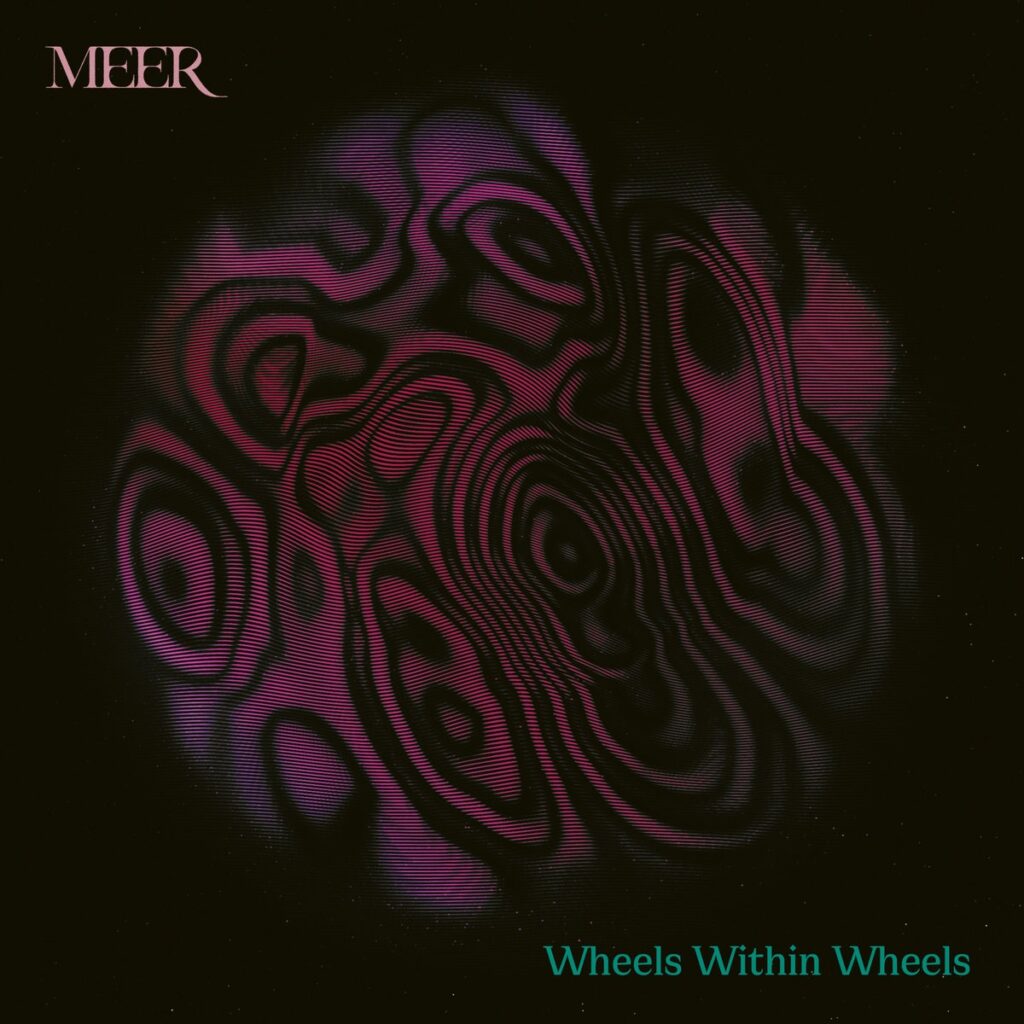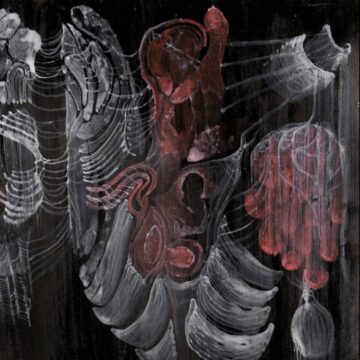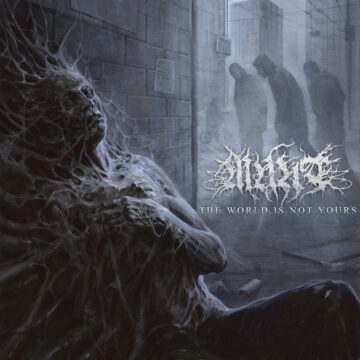Review: Meer – Wheels Within Wheels

Style: Progressive rock, art rock (clean vocals)
Recommended for fans of: Bent Knee, The Dear Hunter, pop Leprous, Hjaltalín, Kalandra
Country: Norway
Release date: 23 August 2024
Certain bands take The Progressive Subway by storm. We’d all be front row at a Subterranean Masquerade concert, a chorus of “Rain fears no fire / just as the tide fears no shore” can be heard throughout the Subway offices whenever Tanagra are mentioned, and Meer have managed to unite the disparate tastes of our writers, from the prog death nerd (Zach) to the trad prog devotee (Sam), from the most pretentious guy you’ve ever met (Andy) to our resident gay forest goblin (Dave)1. The Norwegian self-described alternative pop orchestra’s second album Playing House scratched all of us just right, and we were all understandably hyped when Wheels Within Wheels was announced.
Meer’s style hinges upon sibling vocalists Johanne and Knut Kippersund Nesdal who trade lead duties, duet, and back one another, against the backdrop of a progressive rock band with an emphasis on grandiose piano and strings. With eight members, there’s a lot going on, but the orchestral ethos orders the arrangements with an emphasis on flow and layering over the somewhat stereotypical prog tendency towards masturbation. Meer are also possessed of an impressive narrative energy, propelling the tracks forward with intimate and emotive lyrics that form a tapestry of sonic melodrama.
“Chain of Changes” opens the album in style, invoking a little of Meer’s nordic neighbours First Aid Kit, but cycling through a range of sections—including a Dream Theater-esque keyboard lick and some intricate strings at the song’s close—the band soon show that they’re taking their composition to a proggier place, amping up the complexity without sacrificing any of their catchy pop sensibility. These proggier interspersions suffuse the album subtly, reaching their peak on the nine-minute closing track “This is the End” which plays with a 7/4 rhythm in its midsection, and delivers a rather moving eulogy to Playing House. Meanwhile, the main riff of plaintive lead single “Golden Circle” alternates between a bar of 4/4 and a bar of 6/4. These complexities are never used for the sake of it but are seamlessly interwoven into the overall composition. For example, “Take Me to the River” weaves the siblings’ vocal harmonies in and out seamlessly, ultimately leading to a joyous instrumental section where the guitar flows like the water of memory as the strings and piano evoke the childhood nostalgia to which the lyrics allude; narrative drive and evocative emotion are always at the forefront of everything Meer do.
As much as I loved Playing House, I was never so keen on the softer tracks on that album, many of which were led by Knut. Songs like “Across the Ocean”, “All at Sea”, and “Child” had their charm but Knut’s breathy vocal performance was simply less compelling to me. So imagine my surprise when “Behave” had me bangin’ my cage; the power in Knut’s voice has come on immensely and he belts out that glorious chorus like his life depends on it. He’s come into his own as the perfect foil to Johanne—the way that the two siblings complement one another with alternate backing and duets, too, is much matured. And, fortunately, the focus on progression means that the softer tracks often build to wonderful crescendos and never feel undercooked—the only track that feels like a holdover in its relative meekness is “Mother”.
The production is capacious with the vocals up front and a circle of instruments behind, all lovingly cared for, with a slightly live in studio feel—there’s a rawness to it that feels a little dangerous. You feel like someone could hit a wrong note; they never do, but they could. It’s a bold production choice which highlights the best of the band. The only issue that comes with this is that sometimes Johanne is overwhelming; her belting voice is the band’s greatest asset, but on some tracks—”Come to Light”, “To What End”, “This is the End”—the yelling gets overwhelming, and with such forward vocal production, it’s a bit like being in the recording booth with Mel Blanc, the walls shaking as he roars, “I AM A WABBIT!”.
There’s some intertextuality here, too: the main motif of “To What End” seems to echo that of “Honey” but pitched down and slower. Lyrically, as well, there are recurrent themes that all come to a head in the finale which weaves Wheels Within Wheels into the world of Playing House: “pick up the pieces of the house we could not save.” I love that sort of self-referential character, that sense that your art is a little world you’ve built that has a continuity of its own. I’m sure there are other little reprises that I’ve missed, but it speaks to the delightful sense of thoughtful complexity that the band put into their work.
Meer have evolved, progressed, and blossomed into an astounding force in the progressive scene, equalling the high hopes I had for their future. Complexity and catchiness blend effortlessly, the blemishes can’t diminish the whole, and, in its totality, Wheels Within Wheels stands as one of the most consummate works of artistic progressive rock of the year, certainly—if not of the 2020s so far.
- This is how Dave describes himself, believe it or not. ↩︎
Recommended tracks: Chains of Changes, Behave, Take Me to the River, Something in the Water, This is the End
You may also like: Iamthemorning, Marjana Semkina, i Häxa
Final verdict: 8.5/10
Related links: Bandcamp | Spotify | Facebook | Instagram
Label: Karisma Records – Bandcamp | Facebook | Official Website
Meer is:
– Johanne-Margrethe Kippersund Nesdal – Lead vocals and backing vocals
– Knut Kippersund Nesdal – Lead vocals, backing vocals and keyboards
– Eivind Strømstad – Electric and acoustic guitars, electric baritone guitar, additional keyboards, programming and backing vocals
– Åsa Ree – Violin and backing vocals
– Ingvild Nordstoga Sandvik – Viola and backing vocals
– Ole Gjøstøl – Acoustic grand piano, keyboards, programming, electric organ, church organ and backing vocals
– Morten Strypet – Electric bass and backing vocals
– Mats Fjeld Lillehaug – Drums, percussion and backing vocals



1 Comment
Review: Our Oceans - Right Here, Right Now - The Progressive Subway · December 21, 2025 at 22:42
[…] the time-honoured genre tropes. From the frenetic melodicism of Frost* to the poppy symphonics of Meer to the zany shenanigans of Moron Police, the modern prog scene fortunately has more to offer than […]